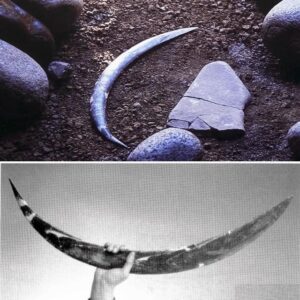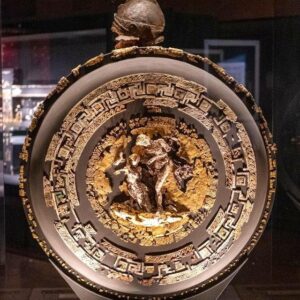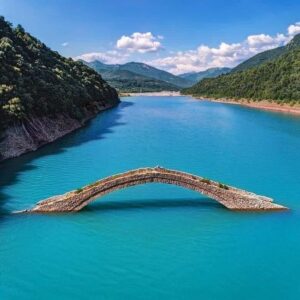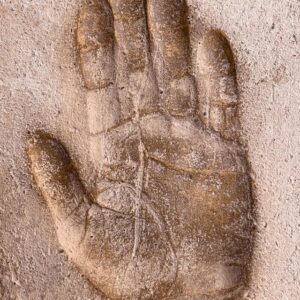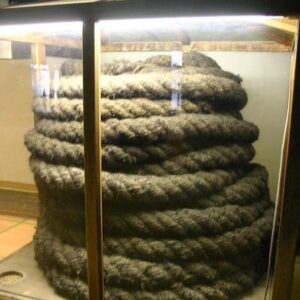
Remarkably well-preserved multi-story building at the Akrotiri archaeological site on the Greek island of Santorini. Photo: Olaf Tausch
A bustling town frozen in time, its buildings remarkably intact and colorful frescoes adorning the walls. Welcome to Akrotiri, a 3,600-year-old Minoan settlement buried beneath volcanic ash on the Greek island of Santorini.
The Thera (Santorini’s ancient name) eruption, estimated to have occurred around 1600 BCE, smothered Akrotiri in a thick layer of ash, preserving it in an extraordinary state. Similar to the fate of Pompeii or Herculaneum, the town, its residents, and their possessions were enveloped in a protective volcanic blanket – but it all happened some 1700 years earlier, offering a unparalleled view into Minoan civilization.
The Minoan civilization, centered on Crete but leaving its mark throughout the Aegean Sea, thrived during the Bronze Age. Known for its grand palaces and stunning artworks pulsating with life, it is often considered Europe’s first civilization. Emerging from Crete’s Neolithic cultures around 3100 BC, Minoans developed complex urban centers by 2000 BC, as evidenced by the ruins of Minoan palaces at Knossos and Phaistos. However, by 1450 BC, they fell under the cultural and possibly political sway of mainland Mycenaean Greeks, leading to a blended civilization that endured until roughly 1100 BC.

Artistic reconstruction of life in palace at Knossos, a major center of the Minoan civilization. Artist: Emile Gilliéron the younger
Akrotiri wasn’t your average Minoan settlement. Excavations have revealed a prosperous town that flourished through trade due to its strategic location at the crossroads of the Aegean Sea on the Greek island of Santorini. The remarkably intact remnants imply a society of intricate organization and sophistication.
Multi-level structures, featuring staircases and balconies, all indicate an advanced urban landscape. The presence of sophisticated drainage systems across the town shows the high quality of life enjoyed by its residents. The artifacts unearthed here, such as pottery and furniture, suggest a specialization of labor and a rich artistic culture.

The sophisticated ancient construction techniques used rendered these tall structures somewhat earthquake-resistant. The staircase is broken but still standing. Photo: Norbert Nagel
Architecturally, Akrotiri stands out not only for its multi-story buildings but also for their exceptional preservation, which cannot solely be attributed to the volcanic eruption. The ancient construction techniques used rendered these tall structures somewhat earthquake-resistant – their remarkable survival over a span of at least 3600 years attests to their durability. Contrasted with nearby village structures demolished in the 1956 earthquake, the buildings at the Akrotiri site demonstrate exceptional craftsmanship.

Buildings and streets, frozen in time. Source
But perhaps the most remarkable aspect of Akrotiri are its frescoes – they are among the most iconic images from the ancient Greek world, offering a window into the artistic sensibilities and way of life of the Minoans. Unlike frescoes found at other Minoan sites, Akrotiri’s artworks are incredibly well-preserved thanks to the volcanic ash that encased them.
These vibrant murals adorned the walls of nearly every building within the town, suggesting that the appreciation for art transcended social classes. The frescoes were not only decorative but also served as a narrative medium, depicting scenes from everyday life, nature, and mythology.

Part of a fresco depicting a ship procession. Photo: Yann Forget
The technique used to create the frescoes is particularly interesting, as, with only rare exceptions, it is not true fresco. It appears the artist initiated painting while the plaster was wet but made no effort to maintain its moisture, completing the work on a dry surface. Consequently, in many cases, the paint has seeped into the plaster in some areas but easily flakes off in others.

Fighters and animals. Photo: Ricardo André Frantz
Despite this difference in technique, the mineral-based pigments used ensured the longevity and vibrancy of these artworks, resulting in remarkably well-preserved pieces. The colors used show the extent of the Minoan mastery of colorants, with a palette including white, yellow, red, brown, blue, and black.

The famous blue monkeys, the first fragments of fresco discovered at Akrotiri in 1968. Photo: Zde
The subject matter of the frescoes is as interesting as the artistic style. One scene depicts a lush landscape teeming with blue monkeys, their forms mimicking the volcanic rocks that surround the site today. Another fresco, the Spring Fresco, shows a perfectly preserved scene in its original location. The Fisherman and the Lady from the House of Ladies offers a glimpse into Minoan social life.

The Spring Fresco. Photo: Jebulon

Fisherman and lady: Photos: ArchaiOptix / Zde
The site continues to be a focal point for archaeological research, offering lessons about the art and adaptability of ancient civilizations. The frescoes and ruins of Akrotiri are not just relics of the past; they tell the story of a lively society that once flourished on the shores of the Aegean Sea.
